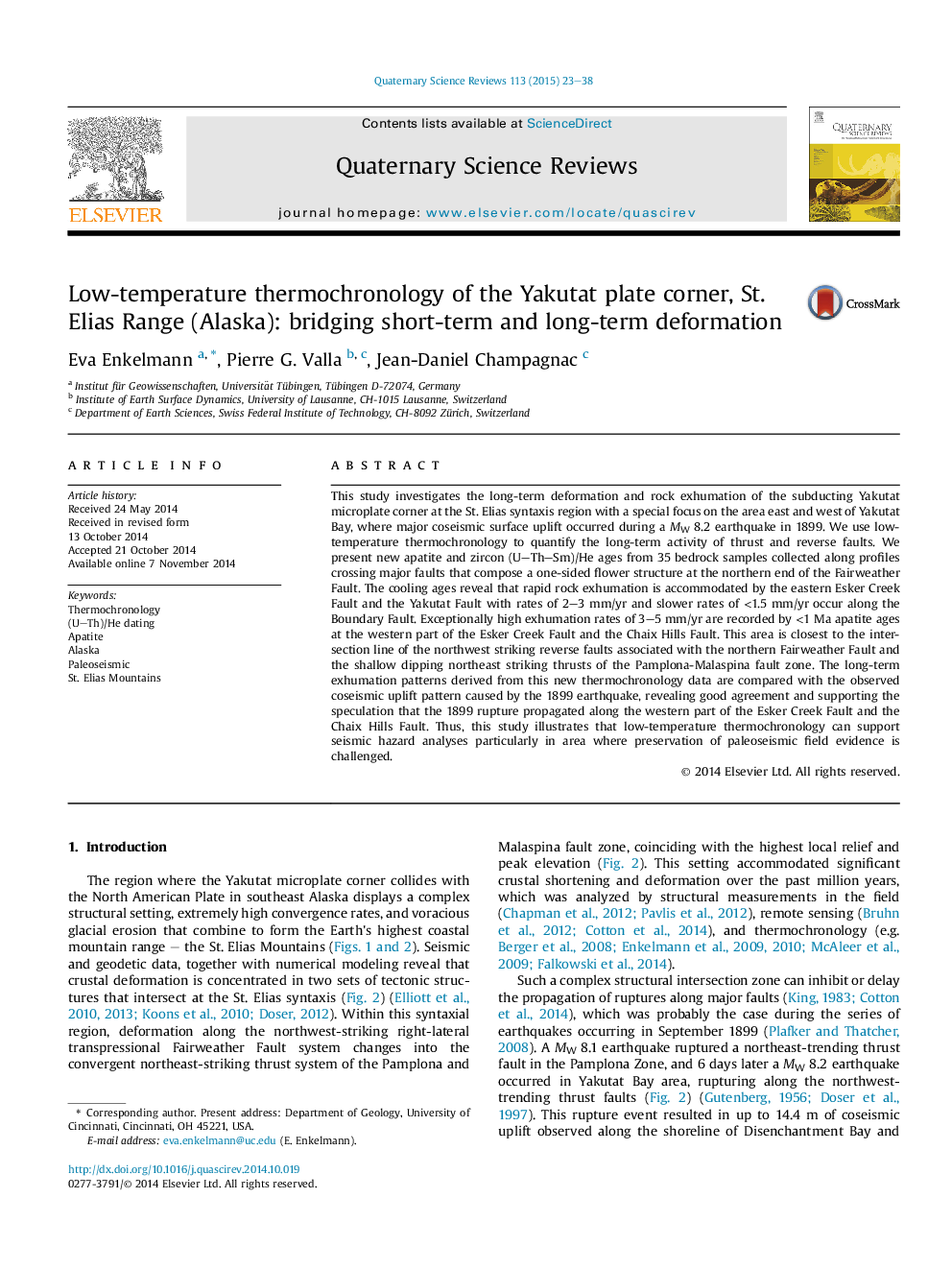| کد مقاله | کد نشریه | سال انتشار | مقاله انگلیسی | نسخه تمام متن |
|---|---|---|---|---|
| 6445610 | 1640821 | 2015 | 16 صفحه PDF | دانلود رایگان |
عنوان انگلیسی مقاله ISI
Low-temperature thermochronology of the Yakutat plate corner, St. Elias Range (Alaska): bridging short-term and long-term deformation
ترجمه فارسی عنوان
ترموکرونولوژی درجه حرارت پایین در گوشه صفحه یکتات، محدوده سنت الیاس (آلاسکا): تغییر شکل کوتاه مدت و بلند مدت
دانلود مقاله + سفارش ترجمه
دانلود مقاله ISI انگلیسی
رایگان برای ایرانیان
موضوعات مرتبط
مهندسی و علوم پایه
علوم زمین و سیارات
زمین شناسی
چکیده انگلیسی
This study investigates the long-term deformation and rock exhumation of the subducting Yakutat microplate corner at the St. Elias syntaxis region with a special focus on the area east and west of Yakutat Bay, where major coseismic surface uplift occurred during a MW 8.2 earthquake in 1899. We use low-temperature thermochronology to quantify the long-term activity of thrust and reverse faults. We present new apatite and zircon (U-Th-Sm)/He ages from 35 bedrock samples collected along profiles crossing major faults that compose a one-sided flower structure at the northern end of the Fairweather Fault. The cooling ages reveal that rapid rock exhumation is accommodated by the eastern Esker Creek Fault and the Yakutat Fault with rates of 2-3Â mm/yr and slower rates of <1.5Â mm/yr occur along the Boundary Fault. Exceptionally high exhumation rates of 3-5Â mm/yr are recorded by <1Â Ma apatite ages at the western part of the Esker Creek Fault and the Chaix Hills Fault. This area is closest to the intersection line of the northwest striking reverse faults associated with the northern Fairweather Fault and the shallow dipping northeast striking thrusts of the Pamplona-Malaspina fault zone. The long-term exhumation patterns derived from this new thermochronology data are compared with the observed coseismic uplift pattern caused by the 1899 earthquake, revealing good agreement and supporting the speculation that the 1899 rupture propagated along the western part of the Esker Creek Fault and the Chaix Hills Fault. Thus, this study illustrates that low-temperature thermochronology can support seismic hazard analyses particularly in area where preservation of paleoseismic field evidence is challenged.
ناشر
Database: Elsevier - ScienceDirect (ساینس دایرکت)
Journal: Quaternary Science Reviews - Volume 113, 1 April 2015, Pages 23-38
Journal: Quaternary Science Reviews - Volume 113, 1 April 2015, Pages 23-38
نویسندگان
Eva Enkelmann, Pierre G. Valla, Jean-Daniel Champagnac,
